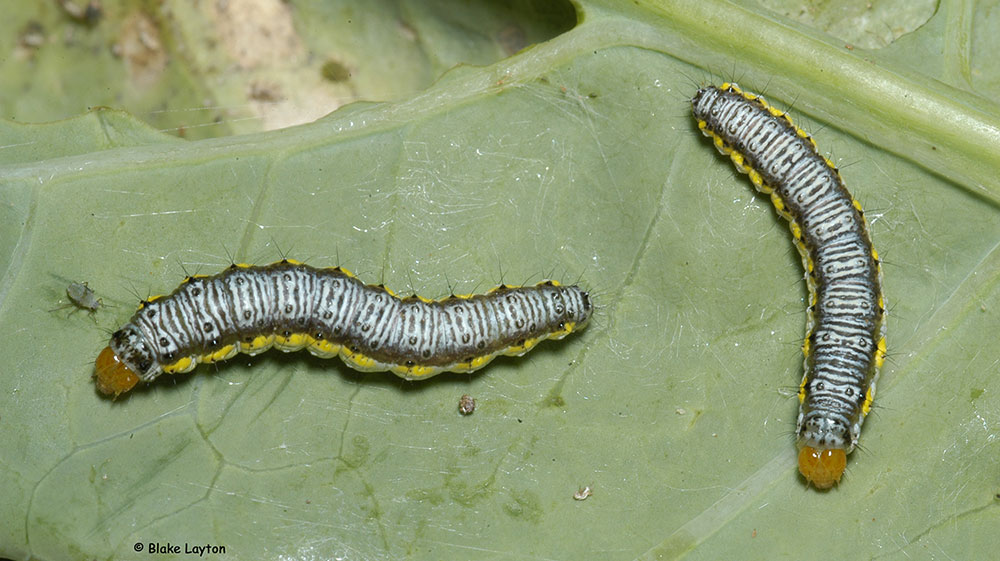Cross-striped Cabbageworm, Vol. 2, No. 2

Evergestis rimosalis
Order: Lepidoptera
Family: Crambidae
Cross-striped cabbage worms attack a wide range of brassica crops: cabbage, broccoli, collards, kale, turnips, bok choi, and more. Here in Mississippi, these strikingly marked caterpillars occur in both fall and spring, and spring-grown brassica crops are sometimes heavily damaged. As with other caterpillars, small windowpane-like areas in the leaves often provide the first sign of infestation. These window panes are caused by young caterpillars feeding on the underside of the leaf and leaving the clear upper epidermis of the leaf intact. Because the moths lay their eggs in clusters on the undersides of leaves, infestations are often spotty, but heavy infestations of older caterpillars can cause severe damage by skeletonizing leaves and destroying terminal buds.
Control: Sprays containing the active ingredient spinosad are one of the best treatment options for any type of caterpillar pest on brassicae crops in home gardens. Spinosad is readily available to home gardeners under many different brand names. Fertilome, GreenLight, Bonide, and Montery are examples, and some formulations are approved for organic gardening. Products containing “Bt”, Bacillus thuringiensis, are another option, but spinosad is more effective. Caterpillars are easiest to kill when they are small. Begin spraying as soon as you notice young caterpillars or feeding injury.
See Extension Publication 2347, Insect Pests of the Home Vegetable Garden, for more information about how to control caterpillar pests on brassica crops. Although cross-striped cabbageworms are not specifically listed in this publication, treatments recommended to control loopers, imported cabbageworms, and diamondback moths will also work on this less common species.
Blake Layton, Extension Entomology Specialist, Mississippi State University Extension Service.
The information given here is for educational purposes only. Always read and follow current label directions. Specific commercial products are mentioned as examples only and reference to specific products or trade names is made with the understanding that no discrimination is intended to other products that may also be suitable and appropriately labeled.

